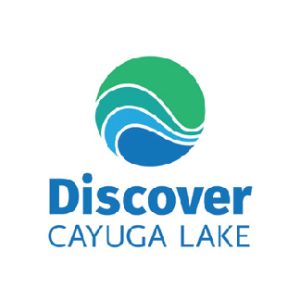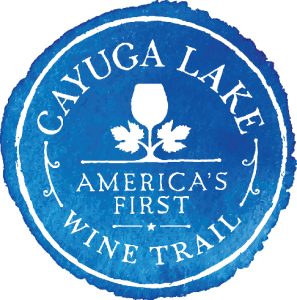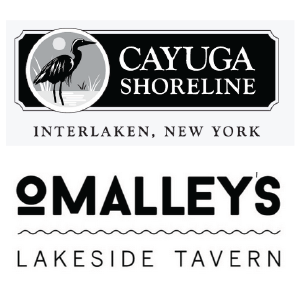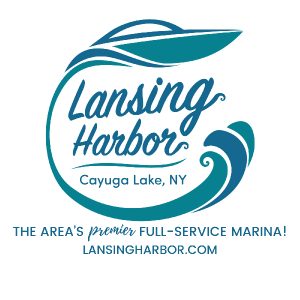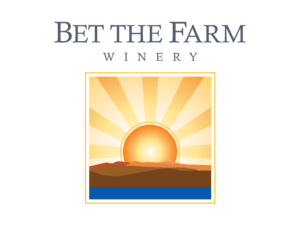The canal system will soon be up and operating again for the season. If you’ve never seen how a canal lock functions, stop in to the Cayuga-Seneca Canal Lock 1 on the north end of Cayuga Lake off the Byway. Read on to learn more about the canal.
The Cayuga-Seneca Canal
by Mel Russo
A unique feature of Seneca and Cayuga Lakes is the splendid canal which connects these two largest Finger Lakes. This amazing engineering feat of its time not only links the lakes to each other but also allows access to the rest of the world’s waterways from the two lakes; a boat on Seneca Lake needs to descend only a mere 13 feet through the locks in Waterloo (Lock #4) then another approximate 50 feet through two consecutive locks (Lock #2 at 25.9’ and Lock #3 at 24.5’ ) in Seneca Falls. Moving east, the canal leads to Mud Lock in Cayuga where a boat may enter the rest of the Barge Canal system by descending about 10 feet (at Lock #1 for 8.9’) to the Seneca River passing through Montezuma National Wildlife Refuge to “Three Rivers” where the Seneca joins the Oneida forming the Oswego that leads to Lake Ontario and the St. Lawrence River and Seaway. The chain of mean elevation changes are: Seneca Lake at +/-444’ above sea level, Cayuga Lake at +/-384’, bottom of Mud Lock at +/-374’ to Lake Ontario at 246’ above sea level to the Atlantic Ocean at +/-0’. (Slight differences are due to flow gradient.)
Prior to the building of the original part of the Erie Canal (begun in 1817 and completed in October 1825) there was a natural waterway between the two big Finger Lakes described by early settlers as a “babbling brook.” Settlers as late as the 18th century recorded the babbling brook as overflowing with Atlantic Salmon (Salmo salar) and the American Eel (Anguilla rostrata), originally native to Seneca, Cayuga, and Oneida Lakes and their tributaries. Writings of early inhabitants of the Finger Lakes area reported that salmon were so plentiful, they were able to fill a boat with the fish in a short time by simply clubbing the fish with their paddles. The original stock populations of both of these species were able to ascend the Oswego River from Lake Ontario; because of the rather abrupt falls in the Keuka Outlet, the Salmon were unable to penetrate into Keuka Lake.
According to early writings, common eel (non-parasitic) was also very plentiful in Seneca and Cayuga Lakes prior to the construction of the canal. Waterloo (Skoi-Yase) was referred to by Native Americans as “the place of the eel taking” as they cited the village in the present day Cayuga Indian Land Claim, a law suit initiated and filed in the early 1980s by the Cayuga Indians against the State of New York. Immature forms of the American eel have the extraordinary ability to ascend the faces of rock cliffs that form waterfalls. It can be assumed that Skoi-Yase was the traditional location along the brook where tasty immature forms of the Anguillae could be easily captured by hand as the fish skillfully climbed the face of rock cliffs at the falls. The common (American) eel breeds in the Sargasso Sea off the eastern coast of Florida and travels to the Oswego River system via the St. Lawrence Seaway and Lake Ontario to the central Finger Lakes.
The Cayuga – Seneca Canal was reconstructed in 1909 by referendum including it as a part of the newly approved Barge Canal, leaving remnants of the original canal (opened to the public on November 15, 1828) still visible in the proximity of the existing canal banks. From an ecological perspective, the canal systems created a disaster for much of the existing 10,000- year-old ecosystems which had developed in the Finger Lakes Region. The canals ended the copious and natural reproduction of the Atlantic Salmon in Seneca, Cayuga and Oneida Lakes. The fast flowing, highly oxygenated clear waters of the rivers and brooks were transformed to become more sluggish, cloudier, and less aerated than is characteristic of regional canals. Scores of more quiet water and less athletic fishes including parasitic lamprey, common carp, and other invasive species were able to access our waterways disrupting an ancient ecosystem that was originated and initiated since the last glacier. Present day salmon populations in Cayuga and Seneca Lakes are the result of stocking. The hardier, indigenous American Eel continues its natural migration into the lakes from the Sargasso Sea as well as their return and historic descent to the sea: despite canal systems.
Nevertheless, many natural and quality life elements continue to thrive making our Finger Lakes area a great place to live.
*Where are the falls in Seneca Falls? Answer: between the locks!
Van Cleef Lake, a small, man-made lake to the west of the piggy-back locks was created in 1915, prior to the re- structuring and completion of those locks in Seneca Falls. The flooding of this area of the canal previously known as “the flats” is celebrated each year in Seneca Falls.
Edited by Susan Backlund
© 2017 Mel Russo All Rights Reserved.
Top-Tier Supporters of the Cayuga Lake Scenic Byway, Inc. Enjoy the Ride!

